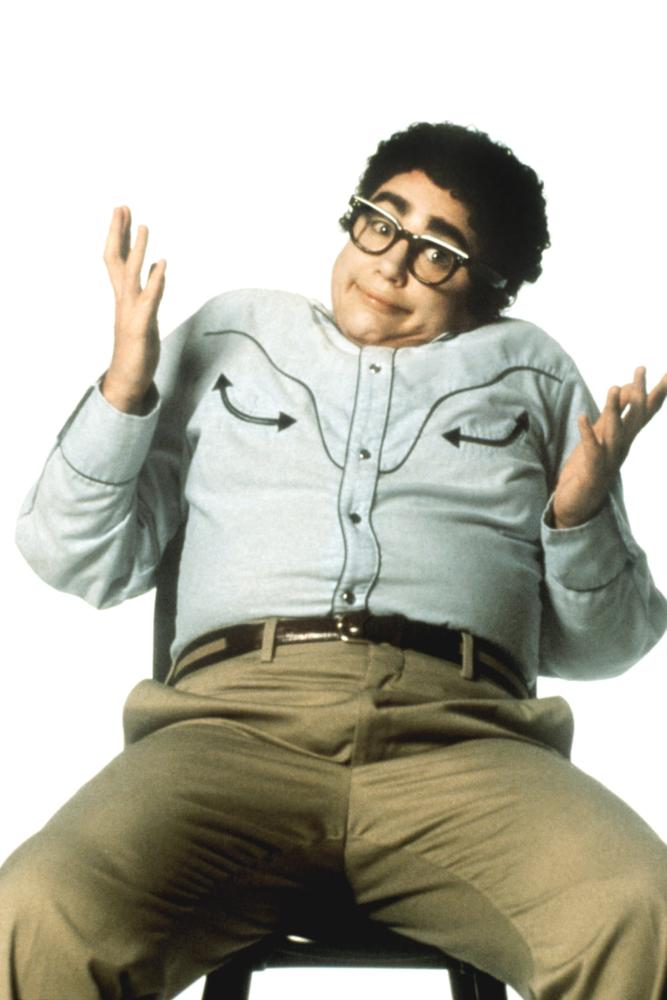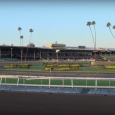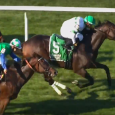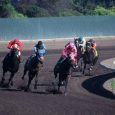
Julia Sweeney as “Pat” (photo via www.lifezette.com)
Whenever I attempt to explain how to measure class in a racehorse, I am reminded of that old Julia Sweeney character on Saturday Night Live. Although, I never found the skits featuring “Pat” to be particularly funny (and, like most unfunny SNL bits, they lasted forever), the ambiguous nature of Sweeney’s signature character is precisely how I view class.
Simply put, it is hard to define.
Legendary punter “Pittsburg Phil” said class in a horse was “the ability possessed by it to carry its stipulated stake weight, take the track and go the distance that nature intended that it should go.”
Andrew Beyer, while believing that class was relatively unimportant, gauged it (as many handicappers still do) by the company a horse has kept, noting in “Picking Winners” that class was especially important in “grass races and at tracks that do not have an electric timer.”
In “Thoroughbred Racing—Playing for Profit,” Ray Taulbot laid out what I believe is the most accurate explanation of class when he wrote: “A high-class horse is simply an animal that owns a high degree of reserve racing power, which it can call upon to either set or force a pace so fast that it burns out the cheaper horse’s store of reserve racing energy, leaving the high-class animal with sufficient power to go on and win the race, sometimes in slower time than the lower-grade horse has previously run the distance.”
Most of us have witnessed Taulbot’s view of class in some of the great racehorses we’ve cheered for over the years. Take, for example, Dr. Fager and his stunning world record performance in the 1968 Washington Park Handicap.
Breaking from the six-hole in a field of nine, the good Dr. pressed the pace through a 44-second opening half-mile and six furlongs in a blistering 1:07-1/5, before drawing clear to win by 10 lengths under a staggering weight impost of 134 lbs. (giving credence to Pittsburg Phil’s definition of class as well).
We also saw it, more recently, in the exploits of Zenyatta. While speed handicappers and “company line” class advocates scoffed at her accomplishments against less-than-stellar competition over primarily synthetic surfaces in California, those of us who compute pace figures knew the daughter of Street Cry was something special.
If you are one who doubts Zenyatta’s greatness, I suggest you watch the 2010 Clement L. Hirsch Stakes… and then give yourself 30 lashes as means of repentance. Yeah, I know, the horse she beat that day (Rinterval) finished her career with just three wins and nary a graded stakes score on her resume, but it was the way that Zenyatta won that was impressive.
Trailing by seven lengths after four furlongs timed in :50.61, Zenyatta played the part of Pegasus down the lane, running the final sixteenth of a mile in an eye-popping 5.97 seconds, despite being floated wide by a tiring Dance to My Tune rounding the final bend.
In fact, it is the ability of top horses to unleash seemingly impossible bursts of speed that I suspect led Beyer to his conclusion about class and grass (an observation parroted by handicapping author James Quinn). For turf races, as well as races on most synthetic surfaces, emphasize late speed or pace — the more, the better.
However, in an effort to provide some numerical backup to Taulbot’s view of class, I decided to do a study.
Now, unfortunately, it wasn’t perfect (few studies are). Because I was attempting to ascertain what impact class had given varying pace scenarios, I had to come up with a working definition of class that I could use as a constant.
I settled on earnings per start (adjusted for total starts, penalizing horses with fewer than 10 trips to post over the past two years). Granted, in today’s era of inflated purses, this may not be the barometer of class that it once was, but it still works fairly well — and is certainly good enough for our purposes here.
The next thing I should probably explain before I present my findings is how I went about determining the pace scenarios you’ll see in the table below. This was relatively easy — I simply found the horses with the top three median early speed rations in the field and averaged their ESRs. On my Pace Profile Report, this is the “Projected ESR” that is listed under the race details.
Of course, my speed rations are a bit different than traditional pace figures in that they represent energy disbursement, not necessarily speed, but I think, in this instance, any decent pace figures will work (keeping in mind that we are looking for unusual, or extreme, pace scenarios).

Unfortunately, the sample size is way too small to draw any meaningful conclusions, but what data we do have seems to validate Taulbot’s view. Both in races predicted to have a very fast pace and in races expected to have a very slow pace, we see the cream rise to the top (to use an analogy that’s never been used before).
Another interesting thing I found is that, contrary to what one might expect, the winners of these extreme pace events did not have polar running styles. In other words, the races predicted to have fast paces typically did not produce winners with come-from-behind running styles and vice versa.
Instead, as Taulbot surmised, the top-class horses simply ran their rivals into the ground — either by running faster early or running faster late.




